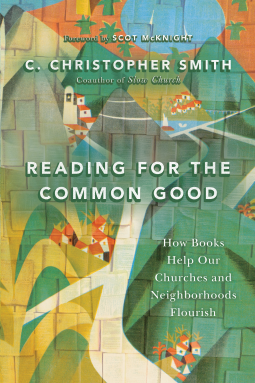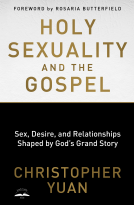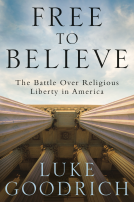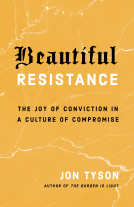
Reading for the Common Good
How Books Help Our Churches and Neighborhoods Flourish
by C. Christopher Smith
This title was previously available on NetGalley and is now archived.
Send NetGalley books directly to your Kindle or Kindle app
1
To read on a Kindle or Kindle app, please add kindle@netgalley.com as an approved email address to receive files in your Amazon account. Click here for step-by-step instructions.
2
Also find your Kindle email address within your Amazon account, and enter it here.
Pub Date Jul 03 2016 | Archive Date Aug 12 2016
InterVarsity Press | IVP Books
Description
In this book C. Christopher Smith, coauthor of Slow Church, looks at the local church as an organization in which both learning and action lie at the heart of its identity. He explores the practice of reading and, in his words, "how we can read together as churches in ways that drive us deeper into action."
Smith continues, "Church can no longer simply be an experience to be passively consumed; rather, we are called into the participatory life of a community. Reading is a vital practice for helping our churches navigate this shift."
Discover how books can help your churches and neighborhoods bring flourishing to the world.
Advance Praise
-Karen Swallow Prior, author of Booked and Fierce Convictions
"C. Christopher Smith offers a fresh, rich and quite unfamiliar proposal concerning human renewal and church regeneration. He exposits the cruciality of reading, thinking and conversing in the community as a bedrock practice for a sustainable missional community. His project serves to awaken us from our numbing 'electronic slumbers' into a slow engagement with imaginative words. I suggest that this book can be a valuable reference for pastoral nurture and education in the church."
-Walter Brueggemann, professor emeritus, Columbia Theological Seminary
"Opening up Reading for the Common Good is like sitting down for a chat with the best kind of friend. C. Christopher Smith's references will provide layers of meaning and inspiration while his heartening and hopeful words will expand your soul."
Carol Howard Merritt, columnist, The Christian Century, author of Healing Spiritual Wounds
Available Editions
| EDITION | Paperback |
| ISBN | 9780830844494 |
| PRICE | $16.00 (USD) |
Average rating from 4 members
Featured Reviews
 Phil A, Reviewer
Phil A, Reviewer
Reading for the Common Good is a unique and necessary book for our time. There are some decent books available on reading from a pastoral perspective, such as Plantinga’s “Reading for Preaching,” and several books on reading that address the general public. This book, however, is not geared towards the individual but the church at large. How do you develop a reading congregation is the question this book addresses. It’s important, though, to quickly qualify this statement. While the author is interested in developing the congregation as a “learning organization,” it’s a specific type of learning he is after. The pursuit is not to build intellectual communities, per se. This is clear throughout, but chapter 9 begins with these words of Gregory the Great’s: “Love itself is knowledge: the more one loves, the more one knows.” The point of our reading should lead us to love. This is clear in the first chapter where the author writes that our faithfulness as neighbors comes about through “learning and action.” “Without learning,” he writes, “our action tends to be reaction and often is superficial…Without action, our faith is irrelevant, and most likely–to borrow a thought from the apostle James–dead.” Another assumption that should be avoided is that the book is an attempt to develop theological readers. This is true, of course, but not exclusively. Our reading should be as broad as our mission. The book deals with reading everything from food labels to serious works of theology.
The author writes about common and important practices, such Lectio Divina, but offers unique thoughts on these practices as well. I loved the idea of the sermon as Lectio, for example. The author also writes not only about the importance of reading, but the importance of how to read – slowly. This is a dying art in our age and it’s recovery is for our health and good.
A large underlying idea of this book, as expressed in the 2nd chapter specifically, is how the “Social Imaginary” (Charles Taylor) can be shaped through our communal reading and conversation. This takes place through various types of reading. Steven Pinker would argued that violence has decreased with in part through novels, for example. Finding ourselves in the stories allows us to see the world through the eyes of the “other." Many types of reading, then, become important as we purse learning and action. I greatly appreciated the way the last chapter dealt with how to sustain reading cultures. Nurture it at a young age. Have reading clubs for youth and “If teens are not inclined to read a book prior to gathering, they can read it aloud together as part of discussion.” He recommends not giving college students things to read since they are already overwhelmed with reading. “A more fruitful approach might be to spend time with them, one on one or in small groups…”. Really great stuff here.
Finally, the book finishes with two fantastic reading lists on the various topics the book addressed. This alone is worth the price of the book. I walked away from reading this wonderful work thinking of ways to begin to better cultivate a reading institution for the sake of the community and for the sake of the Kingdom of God. Five stars.
First, I knew the title alone would preach. Something happens when we come together to discuss a book. It’s a guided discussion that shows us what we have in common and perhaps where we differ. One thing I also appreciated about this book is the detail that Smith uses to describe the success his church has had in reading books together. The ideas presented in this book aren’t just theories. They work! As a follow up to the book he co-authored with John Pattison, Slow Church: Cultivating Community in the Patient Way of Jesus,” this book emphasizes a slower lifestyle that takes the time to learn and converse as we build true community. As one would expect, by the end of this book, you’ll have a whole list of other books you’re interested in reading.
 Alexander S, Reviewer
Alexander S, Reviewer
Chris Smith does a wonderful job of showing the connection between books and our everyday lives. The way that they shape our communities and churches and the impact that they can have on the growth of individuals. The encouragement he gives to promote books and discussion makes one want to go out and start a book club to start seeing the impacts in their own communities. It is a wealth of information that is easily a return to book to see what you can glean from it in additional readings.
 Conrade Y, Reviewer
Conrade Y, Reviewer
What has reading got to do with community? A lot! So says the author and editor of The Englewood Review of Books, Christopher Smith. This co-author of Slow Church continues on the tread of learning to pace ourselves in our reading and our connecting. While his previous bestselling book was on things Church and community, this book is about the general practice of reading and books and how they can cultivate neighbourliness. Smith uses the Church as a "learning organization" as a way to enter the discussion. From reading about DIY manuals to instructions about things essential for daily living, reading can be opportunities to build bridges and to share knowledge of things that matter to our community. For reading is both learning and action. Both must be held together. Learning without action is mere knowledge that does not relate to everyday life. Action without learning will have their superficiality eventually found out. Smith lists the other reasons on how reading can be used for the common good:
It forms us into a compassionate and faithful people who build bridges;
It calls us to know God in His Word;
It guides us to understand the brokenness of the world and how we can be a positive force for good;
It helps us discern and develop our gifts and talents.
Just like learning and action, reading and discernment goes hand in hand. As Christians receive the Witness of the Spirit, they too are to be witnesses for God everywhere they go. It is also a call to be counter-cultural. While the "Slow Food" movement is a reaction against "Fast Food" and Smith's "Slow Church" against the "Fast-paced Church," we are encouraged to take time for "Slow Reading" so as to appreciate the real meaning of what we read. This sets the pace for shaping our own imagination about the social contexts we live in. We learn to read language, time, our education infrastructures, our economy, our built environment, and how these give us a sense of the kind of world we live in. Reading influences and transforms our social imagination. In non-fiction, we learn of narrative, theory, and instructive books that tell us directly the way how our reading can impact our living. In fiction, we learn to see possibilities and parallels to how we live. Poetry helps us experience life in new and fresh ways. All three genres can lead us to endless conversations of things past, present, and future. Reading includes our congregational identity. Like letting Scripture lead us and live in us. Reading helps us discern our calling and how the Church can help us in the process. Smith points out how churches can partner with others to start businesses that spur creativity, employment, and working out of our calling. Put in another way. In reading as vocation, we essentially trust the Church to read us and help us to know our vocation. From mentoring to various forms of spiritual discernment, there are many book resources to choose from.
Gradually, we move outward to what reading means for our neighbours, for our involvement in the neighbourhood, and the way we can connect to society at large. From there we can branch further out to creation and many other aspects of the world such as economics and politics. That is not all. Smith goes beyond reading as an activity toward reading as becoming a community. From book recommendations to book clubs, this aspect of life can be enhanced with regular reviews and updates by community members committed to read.
So What?
Recently, someone posted: "Who says I don't read books? I read Facebook?" While it is humourous and witty, it also describes how social media and the electronic medium have influenced the way we read, how frequent we read, and whether we read actual books at all in the first place. Since the advent of the printing press, books have become common place in many societies. With the widespread availability of the Internet, books are increasingly being placed on the electronic media. This changes our normal 'slow reading' into 'speed reading.'
For those of us who hardly read, this book is a wake-up call to pick up a book and start reading. There is so much to learn and to be fascinated with. For those of us who read only e-magazines, remember that there are a lot more good printed material to gather our information from. Beware of the F-Shaped browsing syndrome that researches have found with regard to the way people read electronic media. For those of us who have been reading, maybe it's high time to raise the bar to read better books; to read other genres; and to read with community in mind. This latter point is exactly where Smith is coming from. For an activity that seems to be individually centered, I am heartened to know about this book that attempts to bridge the individual with the community through reading. The last chapter on resources is a great way to begin growing deeper in the discipline of reading. Perhaps, the more we read, the less it becomes some kind of an exercise or workout. It becomes a joy in reading.
Rating: 4.75 stars of 5.
conrade
This book is provided to me courtesy of IVP Books and NetGalley in exchange for an honest review. All opinions offered above are mine unless otherwise stated or implied.








